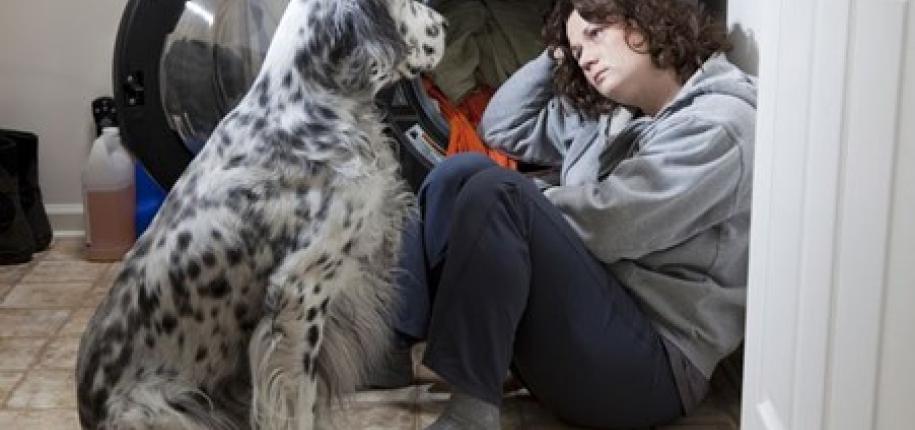
As a young clinician doing suicide risk assessments, a standard question I asked people experiencing suicidality was “what’s stopped you up until now from acting?”. It is not a question I came up with, it is a standard question in risk assessment that helps to elicit what are referred to as “protective factors” in healthcare; these are the things that help to alleviate the risk of negative health outcomes. I got the responses – associated with known protective factors against suicide completion – that I’d been taught to expect; responses such as “I can’t do that to my parents”, “I can’t leave my children”, and “It’s against my religious beliefs”. However, often enough that it gave me pause, was the following answer to my question: “I can’t leave my pet”.
Two things about that pet-related response struck me: 1) as an “animal person”, I totally “got” it, it made sense to me on a gut level that people would be that deeply attached to their animals; and 2) as a mental health clinician, I realized that nowhere in my professional education or training had it ever been even briefly mentioned that a person’s relationship with their animal might be significant to ask about as a potential protective factor and/or explored as relevant to their well-being, yet - on a regular basis - people were telling me that the reason they were literally still alive talking with me was because of their animals.
September is National Suicide Prevention Month. Over 70% of U.S. households report having at least one pet, and the majority of those indicate they consider their animals to be family members, according to the American Pet Products Association 22-23 survey. Concern about family members is a well-documented protective factor against suicide completion. There is an increasing body of peer-reviewed research identifying people’s relationships with their animals as protective factors against suicide completion.
In 2020 research conducted by Dr. Janette Young and colleagues[i], over a third of older adults (aged 60-83 years) who reported being actively suicidal cited their animals as giving them a reason to live; specifically, they indicated caring for their animals gave them purpose, and the presence of their animals provided comfort and helped mitigate loneliness. Suicide risk reduction related to not wanting to leave one’s companion animal behind has been described in peer-reviewed studies with both general vulnerable groups[ii],[iii],[iv],[v] and in a wide range of specific vulnerable populations such as autistic adults[vi]; domestic violence survivors[vii]; adults experiencing homelessness[viii]; LGBTQ+ young people experiencing homelessness[ix]; and veterans with PTSD[x]
Helping people and their animals stay together whenever possible during times of crisis is especially critical. United Way Worldwide and 211 are partnered with Open Door Veterinary Collective to help ensure that people seeking resources to assist them with their animals can locate existing supports quickly and easily, through a free national database called pethelpfinder.org . This database is accessible to 211 staff, the general public, and anyone else who may have reason to seek resources to help people with animal resources such as veterinary care, pet food and supplies, temporary boarding and other pet services. Animal health and welfare resources can be uploaded into the pethelpfinder.org database through the site; please encourage your local resources to do so!
To schedule a free interactive workshop on pethelpfinder.org for 211 staff teams and discuss strategies for supporting human-animal relationships within communities, please contact me, Janet Hoy-Gerlach, at socialwork@opendoorconsults.org
[i] Young, J., Bowen-Salter, H., O’Dwyer, L., Stevens, K., Nottle, C., & Baker, A. (2020). A Qualitative Analysis of Pets as Suicide Protection for Older People. Anthrozoös, 33(2), 191–205.
[ii] Hawkins, R. D., Hawkins, E. L., & Tip, L. (2021). “I Can’t Give Up When I Have Them to Care for”: People’s Experiences of Pets and Their Mental Health. Anthrozoös, 34(4), 543–562.
[iii] Love, H. A. (2021). Best Friends Come in All Breeds: The Role of Pets in Suicidality. Anthrozoös, 34(2), 175–186.
[iv] Mason, A., Jang, K., Morley, K., Scarf, D., Collings, S. C., & Riordan, B. C. (2021). A Content Analysis of Reddit Users’ Perspectives on Reasons for Not Following Through with a Suicide Attempt. CyberPsychology, Behavior & Social Networking, 24(10), 642–647.
[v] Shoib, S., Hussaini, S. S., Chandradasa, M., Saeed, F., Khan, T., Swed, S., & Lengvenyte, A. (2022). Role of pets and animal assisted therapy in suicide prevention. Annals of Medicine and Surgery.
[vi] Barcelos, A. M., Kargas, N., Packham, C., & Mills, D. S. (2021). Understanding the impact of dog ownership on autistic adults: implications for mental health and suicide prevention. Scientific Reports, 11(1), 1–16.
[vii] Fitzgerald, A. J. (2007). “They Gave Me a Reason to Live”: The Protective Effects of Companion Animals on the Suicidality of Abused Women. Humanity & Society, 31(4), 355–378.
[viii] Scanlon, L., Hobson-West, P., Cobb, K., McBride, A., & Stavisky, J. (2021). Homeless People and Their Dogs: Exploring the Nature and Impact of the Human–Companion Animal Bond. Anthrozoös, 34(1), 77–92.
[ix] Schmitz, R., Carlisle, Z., & Tabler, J. (2021). “Companion, friend, four-legged fluff ball”: The power of pets in the lives of LGBTQ+ young people experiencing homelessness. Sexualities, 25 (31).
[x] McLaughlin, K., & Hamilton, A. L. (2019). Exploring the influence of service dogs on participation in daily occupations by veterans with PTSD: A pilot study. Australian Occupational Therapy Journal, 66(5), 648–655.
